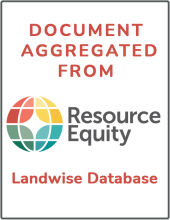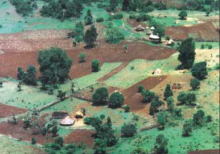Land Library Search
Through our robust search engine, you can search for any item of the over 73,000 highly curated resources in the Land Library.
If you would like to find an overview of what is possible, feel free to peruse the Search Guide.
/ library resources
Showing items 1 through 9 of 17.The Optional Protocol entered into force in 2000.
[adapted from GTZ] 1999- More than one hundred technical co-operation projects on three continents supported by the various technical departments of GTZ were involved in this discussion on Land Use Planning, paying specific attention to gender and women’s promotion through its pi
Access to land is deeply important in rural India, where the incidence of poverty is highly correlated with lack of access to land. Mearns provides a framework for assessing alternative approaches to improving access to land by India's rural poor.
Paper addresses the following concerns:rural women have limited access to and control of landmost agrarian reforms and legislation that directly or indirectly regulate access to land discriminate against womenthe establishment of legal frameworks with a gender perspective and the elimination of c
Based on a survey of 60 villages in Western Ghana, where cocoa is the dominant crop, this study explores evolutionary changes in land tenure institutions on women's land rights and the efficiency of tree resource management....With increasing population pressure, customary land tenure institution
This paper examines the equity implications of the evolution of land rights from communal land tenure to individualization in customary land areas in Western Sumatra.
Land tenure institutions in customary land areas of Sub-Saharan Africa have been evolving towards individualized ownership. Communal land tenure institutions aim to achieve and preserve the equitable distribution of land (and hence, income) among community members.
This study attempts to identify the impacts of land tenure institutions on the efficiency of farm management based on a case study of paddy rice and upland cinnamon production in the Kerinci Valley in West Sumatra, where most of Indonesia’s cinnamon is produced.








